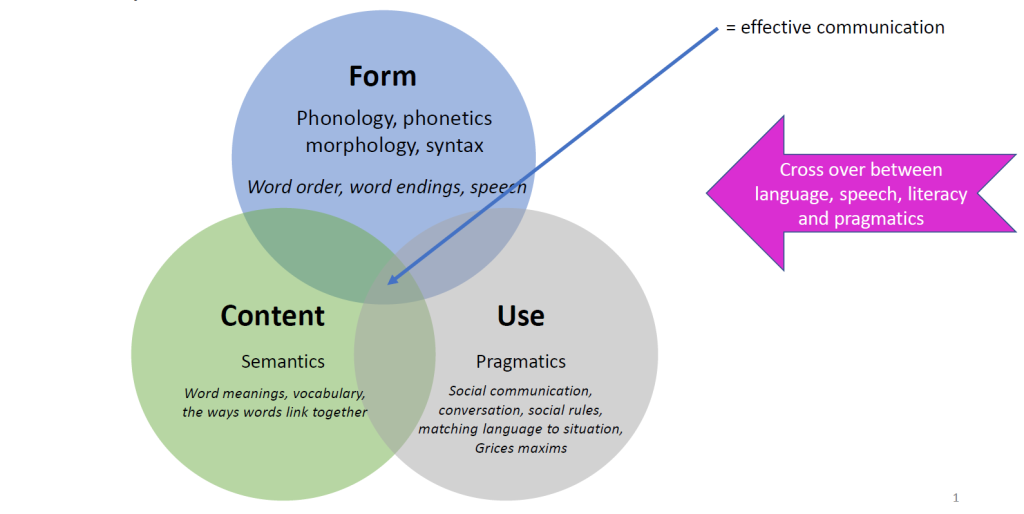2.1 Form, content and use
In communication, form, content and use are key components that shape how communication messages are conveyed and understood. A simple diagram to highlight these interactions is provided in Figure 10 below.

Let’s explore each of these components in more detail:
Form
Definition: Form refers to the structure, medium, and style in which a message is delivered. It encompasses the how of communication.
Key Aspects:
- Medium: The platform or channel used to deliver the message (e.g., face-to-face, written, digital, visual, or auditory).
- Structure: The organization of the message—its grammatical structure, coherence, and clarity.
- Tone: The emotional tone or style, such as formal, informal, professional, or casual.
- Language and Symbols: The words, gestures, or visuals chosen to represent the message.
Purpose: Form impacts how the audience perceives and interprets the message. The right form ensures the message is accessible, effective, and suitable for the audience and context.
Linguistic components:
- Phonetics: study of production of speech sounds. The smallest unit of speech is called a phoneme (e.g. the “c” sound in the word “cat”).
- Phonology: study of the organisation, function and pattern speech sounds (including prosody) as part of grammar in a language.
- Morphology: internal organization of words. The smallest grammatical or meaning unit in a language is called a morpheme (e.g. in the word “cats” there are 2 morphemes: 1 = “cat” and 2 = “s” which indicates plurality).
- Syntax: The linguistic conventions of a language for organising word order at the sentence level.
Content
Definition: Content is the actual information, ideas, words (vocabulary) or message, and the meaning of the message being communicated—the what of communication.
Key Aspects:
- Ideas or Information: The core message being communicated, whether it’s factual, emotional, or persuasive.
- Clarity and Relevance: The quality and importance of the message. The content must be clear and directly related to the purpose of the communication.
- Details: The specifics, examples, or supporting data that explain or back up the message.
Purpose: Content provides the substance of communication. It ensures that the message contains valuable and relevant information for the audience to understand and act upon.
Linguistic components:
- Semantics: the linguistic representation of objects, ideas, feelings and events and the relations among these. In other words, the way words link together to help us express our ideas and understand concepts. Semantics is associated with word meaning.
Use
Definition: Use refers to the purpose or function of the communication—why and how the message is being sent.
Key Aspects:
- Purpose: Whether the communication aims to inform, persuade, entertain, request, or express emotions.
- Context: The situation or environment in which communication occurs, which influences the message’s tone, language, and content.
- Audience: Understanding the needs, preferences, and characteristics of the audience to ensure that the message is appropriate and resonates.
Purpose: Use shapes the intention behind the message, guiding the choice of content and form. It ensures that communication achieves its desired outcome, whether it’s to inform, influence, or entertain.
Linguistic components:
- Pragmatics: how we use language in everyday communication situations, in different communicative contexts and with different communicative partners, and is associated with the social communication rules of a language and culture.
Form refers to the structure, medium, and style in which a message is delivered. It encompasses the how of communication.
Content is the actual information, ideas, words (vocabulary) or message, and the meaning of the message being communicated—the what of communication.
Use refers to the purpose or function of the communication—why and how the message is being sent. The social exchange of language.

